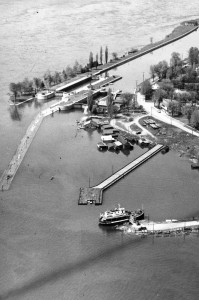Removing is the easy part... we have to get it back on afterwards....
A Scuba Palace Discussion
We had a discussion around the BBQ recently about the problems associated with fully or partially removing an integrated-weight BCD underwater – the type of BCD most commonly used by divers today. In the “old” days, not so very long ago, divers kept most (or all) of their weights on a belt around their waist. They still do with rental units.
Consider the differences (remembering, duh, that we must always be “attached” to our BCD and air supply by our mouthpiece). Hubby Larry is demonstrating in our pool…
- …when our weights are on a belt around our waist: If we must remove our BCD, our body will still be weighted and we can keep the BCD close by gripping it tightly with one hand, leaving the second one free to make adjustments. Our buddy can help with both the adjustments and getting us quickly and safely back into the system.
- … when our weights are in pockets inside pouches on our BCD: If we must remove our BCD, our body no longer has weight attached to it, becomes immediately buoyant, and rises quickly. We must tightly grip the BCD with one hand and regulator with the other, and “fight” for position to keep our air supply tube in place. Once in this predicament, there is little room for manoeuvering, enormous difficulty in fixing any BCD problem, and trouble getting back into it, even with the help of a buddy.
What to do?
In the river, the main reasons for needing to partly or completely remove a BCD include (1) fishing line (or similar) getting caught in your gear somewhere and preventing safe manipulation, or (2) having something not sitting comfortably or positioned incorrectly where you cannot reach it. Either of these can usually be fixed by your buddy with only minimal loosening of your BCD – perhaps unlocking the quick-lock fasteners or removing one arm from the armhole temporarily. The key here is “your buddy”.
It’s not that this cannot be safely accomplished with an integrated system, but that a lot more thought has to go into the process – something that we don’t, when we’ve made the change to the easier pocket system, give consideration to.
Ideas that came out of the discussion:
Inform your buddy of the problem and get assistance immediately… the two of you have a much better chance of setting up the manouevre with minimal risk. If there are more than two of you, all the better.
Find a (relatively) comfortable spot that’s flat (if possible), out of the current (if possible), open (the last thing you want is to be buoyant in an enclosed space) and near things you might be able to grab on to for stability.
Go to deeper water if you can – sudden buoyancy is always tougher in shallow water.
***Get all the air out of your BCD.
Then THINK. All your weights are in your BCD. Keep it close to you… on top of you if you can. Use the added weight of your buddy. Consider keeping one arm still inside its armhole, or perhaps the opposite armhole as you manouevre the BCD. You could consider removing a weight pocket and putting it on your lap or tying it to you somehow, but it wouldn’t help a lot with your movement as you work and you could easily misplace it.
Even if your feet float up, you won’t shoot up as long as you’re holding on to the BCD and your buddy is close. The most important side-task here is to be vigilant about keeping your mouthpiece and tubing free and clear.
Get the problem sorted out, then THINK SOME MORE, this time about the best way to get back into your BCD with your buddy very close at hand. Do it slowly, ensuring that every clip is clipped and every line is functional. The last time you did this may well have been in your training classes.
The point of this post, more than anything, is to get you thinking – about a skill that perhaps you’ve never practiced at all. It never hurts to contemplate tasks that you hope you never have to perform.
Sydney

